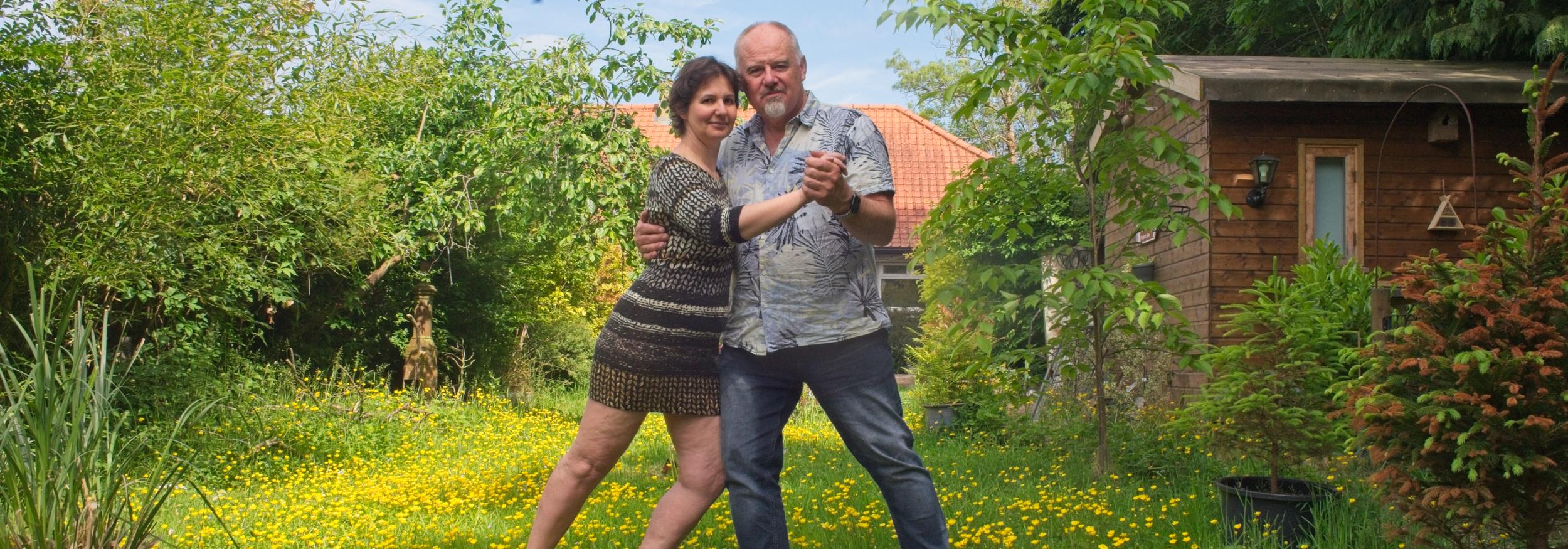



Over the years, Graham has learned how to dance tango from many top Argentine and International teachers, but he has also spent just as much time developing his understanding of how the dance works and in learning how - specifically - to teach a dance that does not consist of repeating figures or step sequences. As a result he has developed his own modern teaching style that is based on the fundamental essence of tango - concentrating on connection, technique, and the two-way dance conversation between leader and follower.
Based on a grounded understanding of movement, balance, and how forces interact with the partners in the dance, Graham's teaching style tries to emphasise the simplicity of the dance whilst exploring what is possible when simplicity meets precision. He makes no claim about being the world's most expert dancer, but instead hopes he can give his students the tools and the understanding of tango to take their dance to places and levels they could never have imagined.
Back in 2016, Graham had this crazy idea to start teaching Modern Jive (also known as LeRoc), and he persuaded Nathalie to join him on this mad adventure. Astonishingly she agreed, and very soon she was partnering him through his preparation for a UKA LeRoc teaching exam. The process required that Graham develop his own LeRoc programme including both beginner and intermediate moves, and then sit a practical exam in front of a certified examiner. The exam consisted of two parts: first simply teaching moves by repetition, and second to demonstrate that he understood the dynamics and mechanics of the dance and how it worked.
Together they opened their first regular class night under the name Jivebeat, and for a while it ran just like any other modern jive or LeRoc venue. But then in May 2017, on one unexpected night in Sevenoaks, they accidentally taught their first tango class. At first it looked as though this was going to be something temporary and that Modern Jive would continue to be the main focus of what they were doing, but it soon became obvious that tango was there to stay. More people were coming to the classes for the tango than the LeRoc, and so after about six months they stopped teaching LeRoc altogether. Jivebeat had officially morphed into a tango class, and so... it became Tangosynthesis!
Unlike for LeRoc there are no meaningful formal qualifications available in the UK for teaching tango, so Graham used what he had learned in preparing for his Modern Jive teaching exam and began to adapt it to this very different dance. The dance styles might seem to be unrelated, but the basic idea of understanding how two dancers' bodies can work together in co-operation to create an improvised dance was very much the same and it was easy to adapt the teaching approach from one to the other.
Graham has been dancing tango for many years, after being 'encouraged' to come along to a class one night by a friend from a modern jive venue. From that first night he became hooked on the dance and realised there was something specifically about tango that he wanted to take further. He continued at that class for a few months, then a change of day-job meant a relocation and he had to find other classes to attend. Nathalie joined him, and since then they have studied tango at a wide variety of schools and with an even wider variety of teachers.
Graham has taken every opportunity possible to take workshops and private classes with modern tango maestros and world champions. Most recently he has trained under Tomas Corbalan (whose teaching and dancing style emphasises the fluidity and expressiveness of tango), and has been having private classes with Leonel Di Cocco (international performer and teacher, who trains competitive tango dancers at the highest level).
From the start of their respective tango journeys, Graham and Nathalie both knew that tango was a dance that needed to be experienced against a backdrop of as many different kinds of music as possible. It may have started in South America with the bandoneon and violin orchestras of the age, but that was only the root of its evolution and could not be where it stops. A lot of modern music from blues to pop has a tango-suitable rhythm, so where music is concerned they soon decided that there are no rules.
This belief in the inherent flexibility of tango extends to the dance itself, and so although they continue to take every opportunity to learn from the best in the traditional tango world, they are not averse to trying new things in tango.
Many years ago, Graham used to run a gym, and was a Pulsar trained gym and fitness instructor. Although that qualification has expired (it must be renewed every three years to remain current) the knowledge never went away and he now uses that understanding of fitness and anatomy to further his understanding of tango. The dance is not considered to be a 'high-impact' form of exercise but the flexibility, stretching, and awareness of your own body's movements and balance points form the basis of a good fundamental fitness programme.
Graham has also trained with Parkinson's UK with regard to teaching dance to people with Parkinson's. Dance, and especially Argentine Tango, has been proven to have significant and beneficial effects for people with the condition.